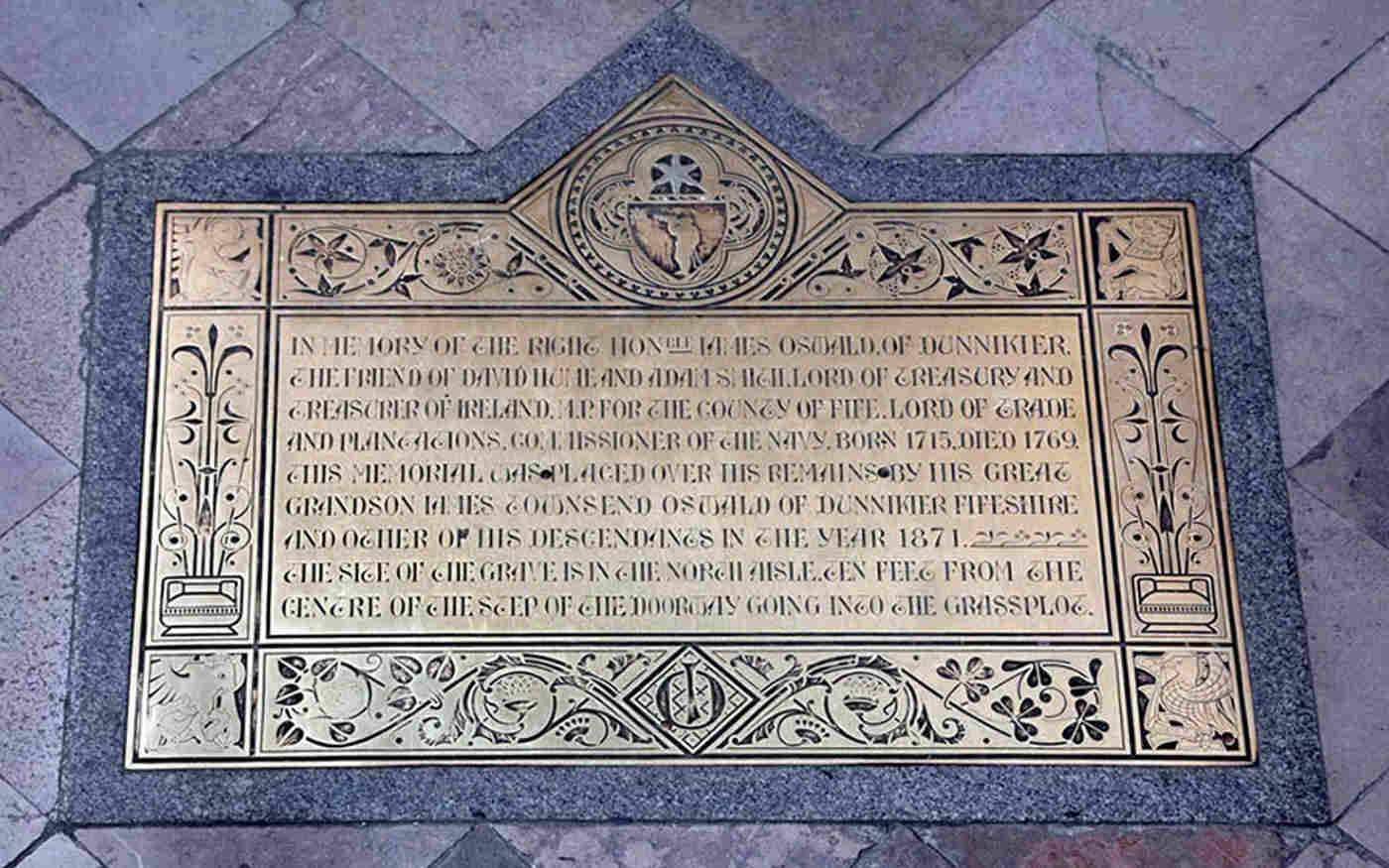Richard Tyrrell
In a window recess of the south aisle of the nave of Westminster Abbey is a large monument of white marble, by Nicholas Read, to the memory of Rear Admiral Tyrrell who was buried at sea. It was unveiled on 16th June 1770.
The huge sculpture was severely curtailed in 1882 and the figure of the Admiral rising up to heaven, together with clouds and cherubs, were removed. (The figure of the Admiral is still in the Abbey collection and is now on show in the new Queen's Diamond Jubilee Galleries). Because of the many flat clouds it was known as the 'Pancake monument'.
The monument now consists of a representation of the sea-bed, in which HMS Buckingham is jammed into a bed of coral. In the foreground are figures representing Hope (resting on an anchor), Hibernia and the Angel of Remuneration. Behind is a pile of inscribed rocks, with an armorial shield, together with emblems of Valour, Prudence and Equity. Hibernia mourns upon a globe, pointing to the spot where the Admiral's body was deposited in the sea. Also shown is an Irish harp, palm branches, a cannon, and quantities of coral and fallen masts. The Angel points to a text 'The Sea shall give up her Dead and every one shall be rewarded according to his works'. The inscription reads:
Sacred to the memory of RICHARD TYRRELL Esqr. who was descended from an ancient family in Ireland, and died Rear Admiral of the White on the 26th day of June 1766 in the 50th year of his age. Devoted from his youth to the naval service of his country, and being formed under the discipline, and animated by the example of his renown'd uncle Sir Peter Warren, he distinguished himself as an able and experienced officer in many gallant actions; particularly on the 3rd of Nov. 1758 when, commanding the Buckingham of 66 guns and 472 men, he attacked and defeated three French ships of war one of which was the Florisant of 74 guns and 700 men but the Buckingham being too much disabled to take possession of her after she had struck, the enemy, under cover of the night, escaped. In this action he received several wounds, and lost three fingers of his right hand. Dying on his return to England from the Leeward Islands, where he had for three years commanded a squadron of his Majesty's ships, his body, according to his own desire was committed to the sea, with the proper honours and ceremonies.
The arms are "ermine, on three bars gules, seven crosses patee, in chief a demi-lion, of the second" but it seems this was incorrectly re-painted.
Further reading
Sir Peter Warren's monument is in the north transept
A portrait of the Admiral is in the National Maritime Museum collection

This image can be purchased from Westminster Abbey Library
Image © 2025 Dean and Chapter of Westminster

This image can be purchased from Westminster Abbey Library
Image © 2025 Dean and Chapter of Westminster

This image can be purchased from Westminster Abbey Library
Image © 2025 Dean and Chapter of Westminster









